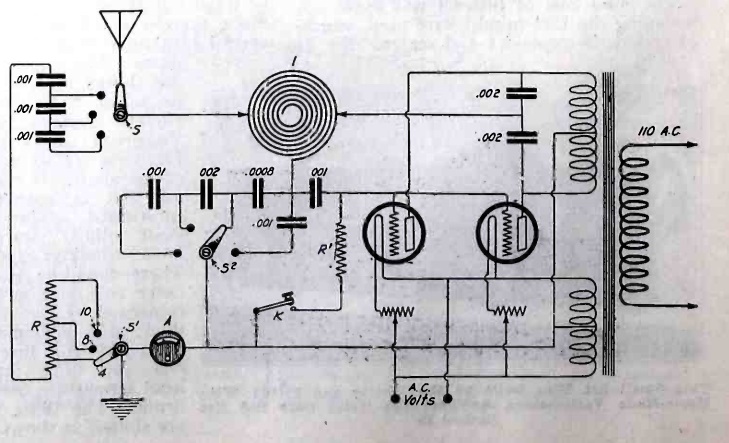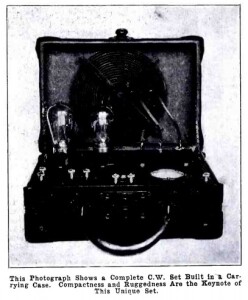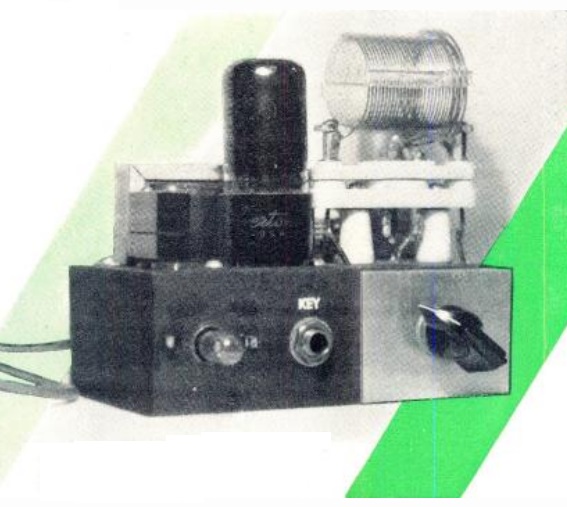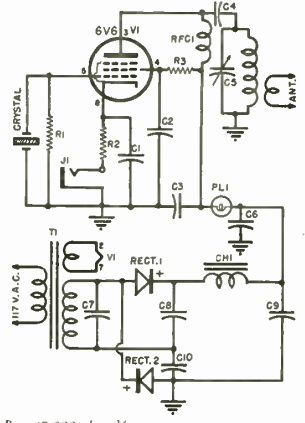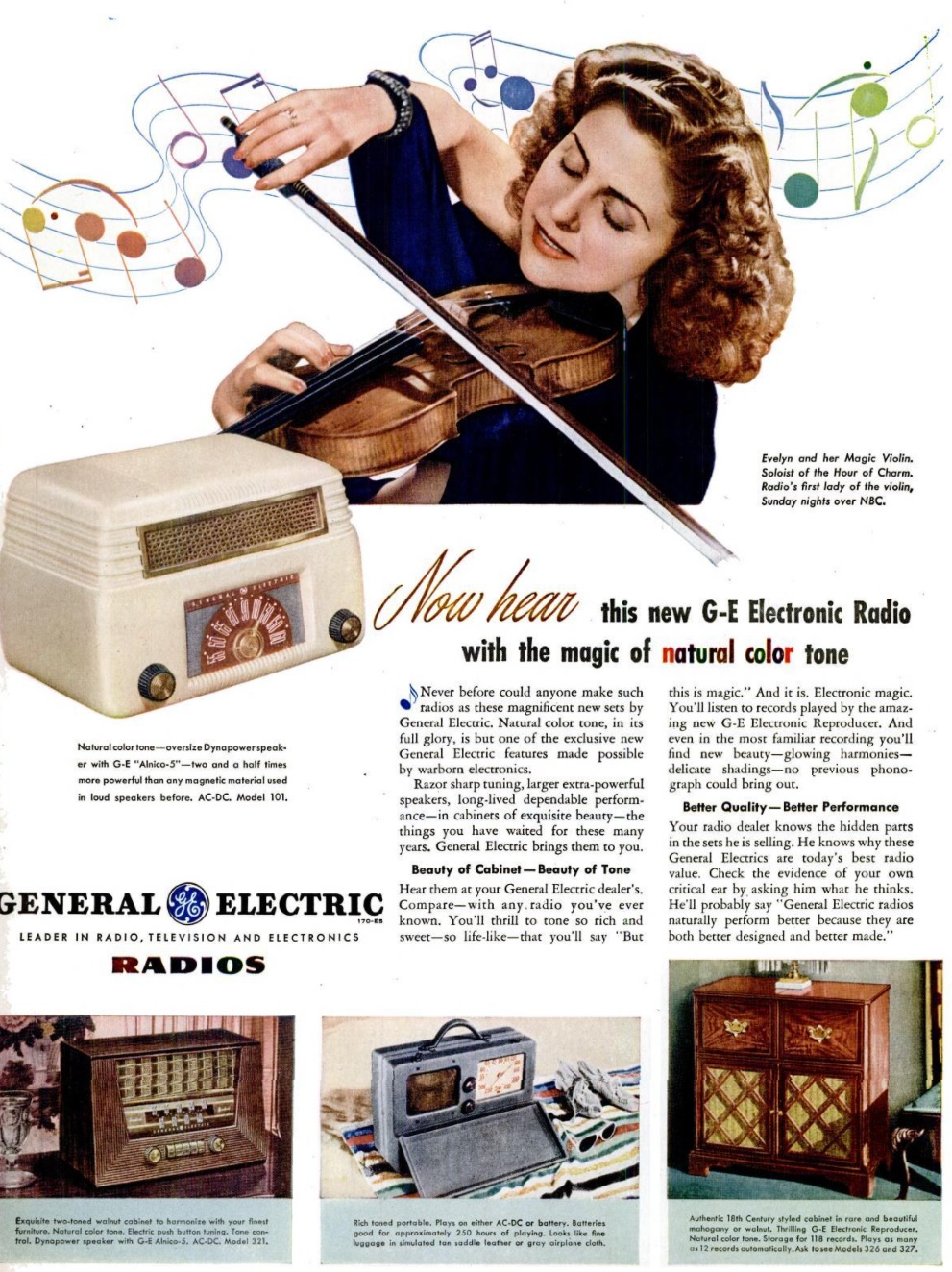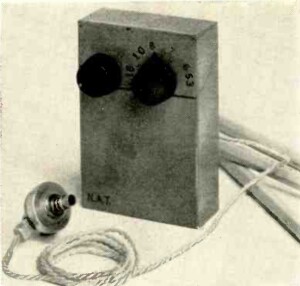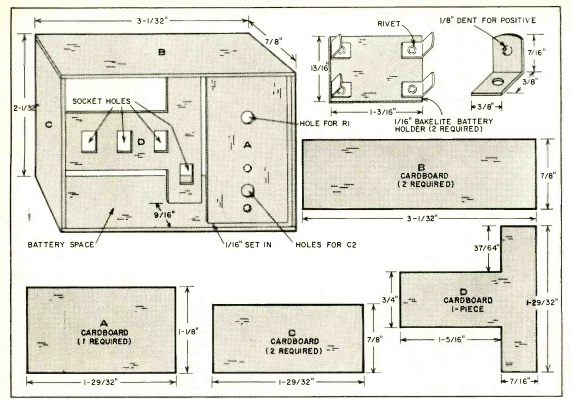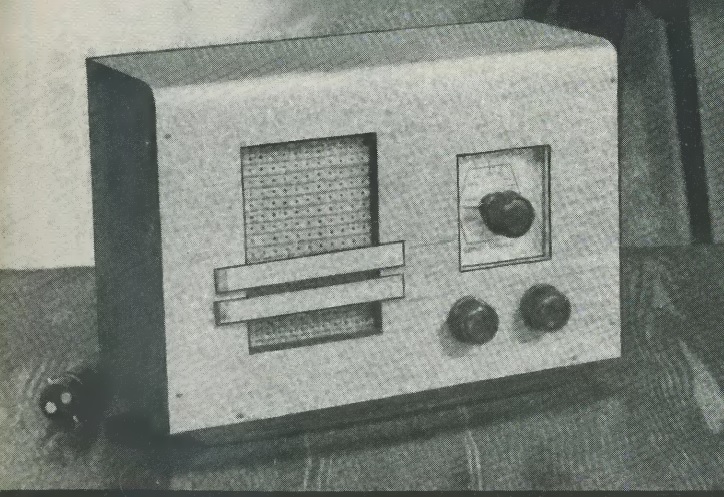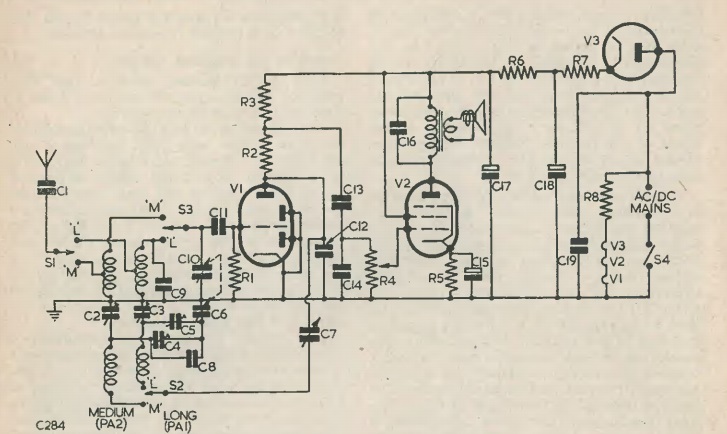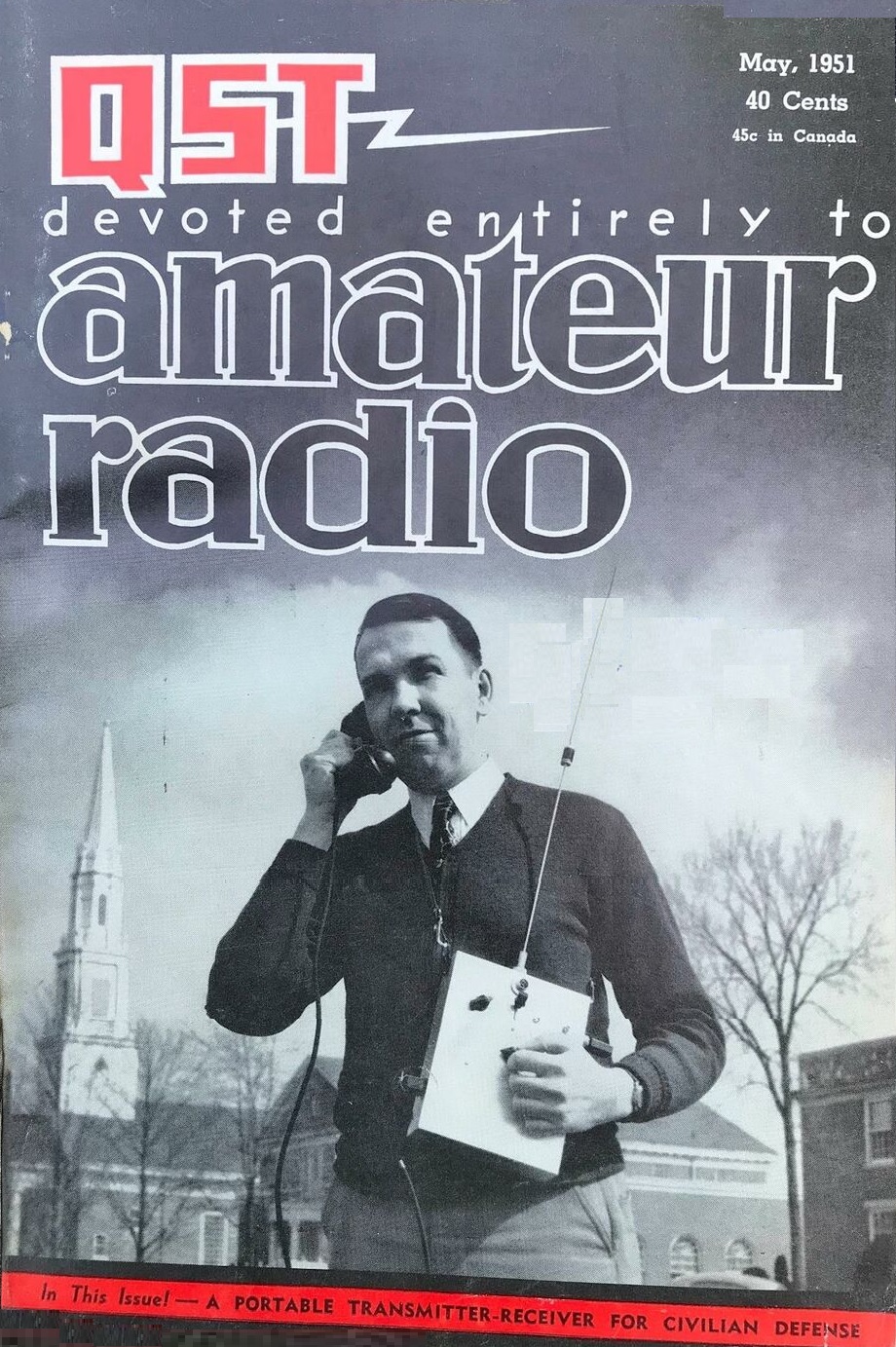 Shown here, on the cover of the May 1951 issue of QST is ARRL’s then-National Emergency Coordinator, George Hart, W1NJM, operating a portable 6 meter civil defense portable station designed by Ed Tilton, W1HDQ and described in the magazine.
Shown here, on the cover of the May 1951 issue of QST is ARRL’s then-National Emergency Coordinator, George Hart, W1NJM, operating a portable 6 meter civil defense portable station designed by Ed Tilton, W1HDQ and described in the magazine.
Tilton’s article described the design goals of the set. He noted that in the past, emergency gear almost always meant “rigs with handles,” namely equipment that could be operated on a 6 volt battery or small AC supply. While such rigs were the backbone of WERS during World War II and would continue to occupy a prominent place, the “present emergency” brought a new need, namely, communications for the radiological survey team. Those teams required on-the-spot communications with a transmitter-receiver that could go with an operator on foot, and not tied to a car battery or other power supply.
The choice of bands to be used presented some problems. A simple modulated oscillator (such as the one described in another magazine the same month), would eliminate the expense of crystals, but they were really practical only on the 220 MHz band, since the civil defense frequencies assigned on 2 meters were two narrow a range for such a transmitter. On 6 or 10 meters, however, crystal oscillators were more cost effective, and between the two, 6 meters allowed a shorter antenna. Therefore, the choice boiled down to 6 meters, if crystal control was desired, or 220 MHz, if it was not. The circuit shown here was a crystal-controlled transmitter-receiver for six meters.
The transmitter used a 3A5 dual triode. The first half was a 25 MHz oscillator using 8.4 MHz crystals on their third overtone, or 25 MHz crystals. The second half of the tube served as a doubler. The set could also be used on 10 meters with different crystals, and using the second half of the tube as an amplifier rather than doubler. A 3Q4 was used for modulator. The superregenerative receiver employed a 957 acorn tube detector, with another 3Q4 serving as audio amplifier.
Since the author couldn’t find another suitable carrying strap for the rig, a piece of 300 ohm twin lead was pressed into service.
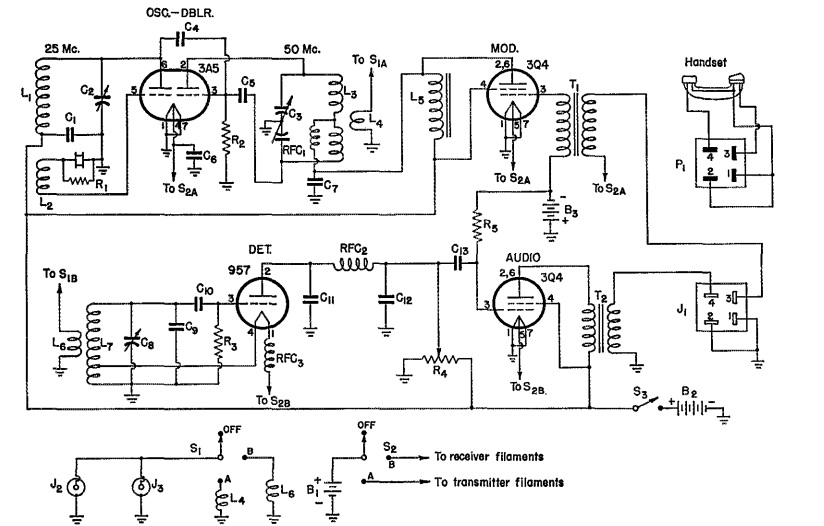
 Eighty years ago this month, the May 1941 issue of Radio Service Dealer carried this ad showing the 1941 lineup of radios from DeWald Radio, 170-16 Jamaica Avenue, Jamaica, New York.
Eighty years ago this month, the May 1941 issue of Radio Service Dealer carried this ad showing the 1941 lineup of radios from DeWald Radio, 170-16 Jamaica Avenue, Jamaica, New York.

